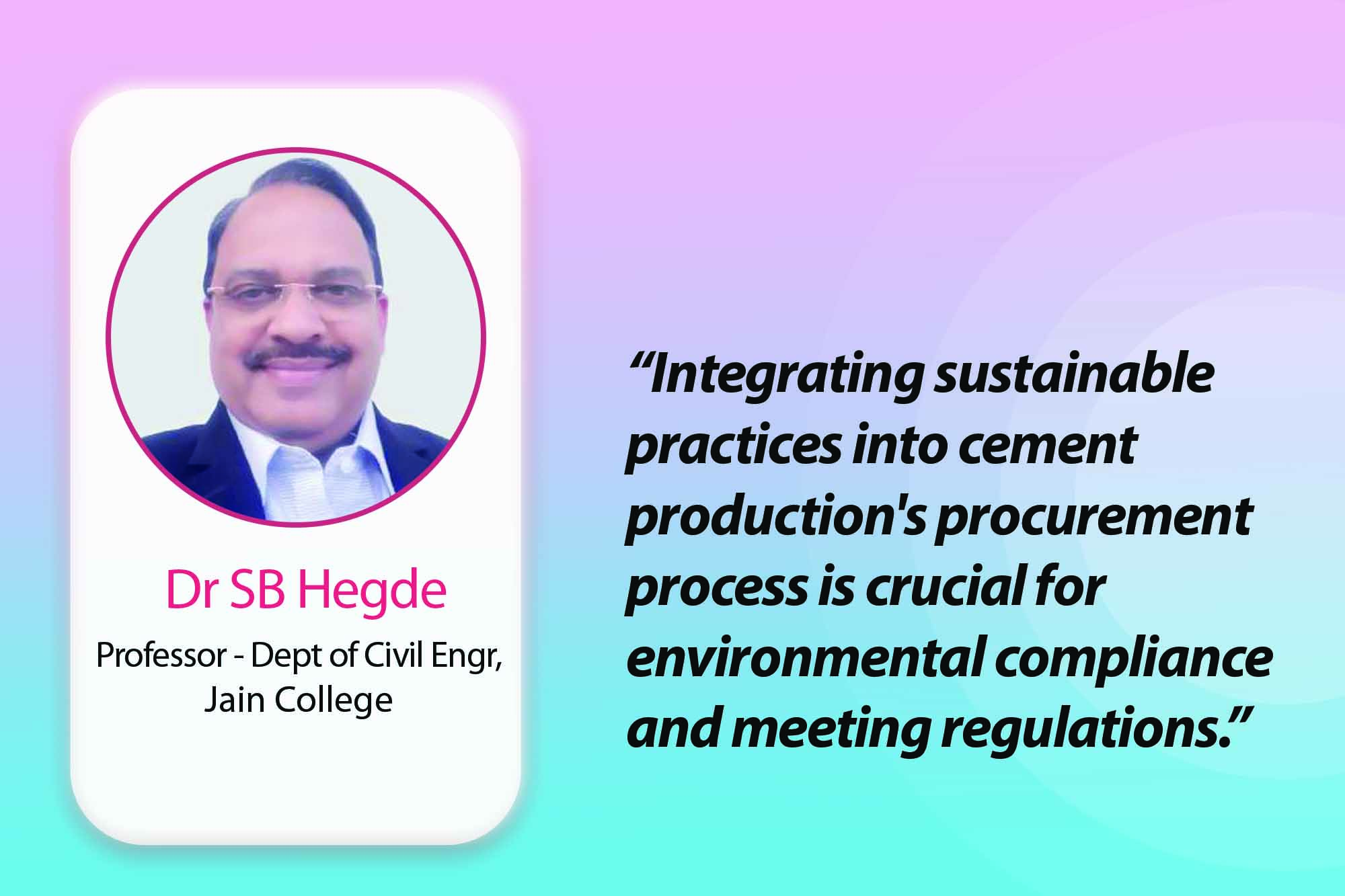Witness the metamorphosis of procurement processes within the cement industry, driven by digital tools, global connectivity, and sustainability imperatives.
What fundamental changes have you observed that have impacted the procurement processes within the construction and infrastructure sectors?
Over the past three decades, the cement industry has undergone significant changes in procurement processes within the construction and infrastructure sectors. Firstly, digital tools and software have made sourcing, bidding, and contract management more efficient. Secondly, globalisation has allowed access to a wider supplier pool, resulting in competitive pricing and better materials. Thirdly, there’s a growing focus on sustainability, with eco-friendly sourcing to meet regulations and corporate responsibility goals. Additionally, supply chain resilience has become crucial, with diversification, risk management, and data analytics ensuring continuity, especially during events like the COVID-19 pandemic. Collaborative procurement models have also emerged, optimising costs and fostering innovation.
Moreover, regulatory changes have emphasised compliance with safety protocols and quality standards, increasing transparency. Lastly, data-driven decision-making through big data analytics has enhanced procurement strategies, leading to improved project outcomes. Overall, these changes have boosted efficiency, reduced costs, and enhanced outcomes in the industry.
How do you perceive the role of innovation in product development within the cement industry?
Innovation is essential in the cement industry, driving progress and competitiveness. It’s not just about novelty but solving challenges and meeting evolving needs. This includes developing stronger, more sustainable materials and optimising the production process with advanced technology. Innovation is critical to reducing carbon footprint and staying ahead in a competitive market. Overall, it’s crucial for long-term success and sustainability in the industry.
How do you envision integrating sustainable practices into the procurement process for construction materials, particularly in the context of cement production?
Integrating sustainable practices into cement production’s procurement process is crucial for environmental compliance and meeting regulations. This involves responsibly sourcing raw materials from suppliers with sustainable practices and prioritising materials with lower carbon footprints, like those using alternative fuels. Considering the entire lifecycle of materials and collaborating closely with suppliers drives innovation and maximises resource efficiency. Overall, it’s about making conscious choices that balance environmental, social, and economic factors for
With your extensive experience in the industry, what measures or best practices do you believe are crucial for enhancing safety standards within cement manufacturing facilities and construction sites?
Drawing from my extensive experience in the industry, several measures are crucial for enhancing safety standards within cement manufacturing facilities and construction sites. Firstly, comprehensive training programs for employees at all levels are essential to instil a culture of safety awareness and compliance with regulations. Secondly, regular safety audits and inspections should be conducted to identify potential hazards and implement corrective measures promptly. Thirdly, investing in state-of-the-art equipment and technology, such as automated systems and personal protective gear, can mitigate risks and improve safety outcomes. Additionally, fostering open communication channels between management and workers encourages reporting of safety concerns and facilitates timely resolution. Finally, establishing emergency response protocols and conducting drills prepares personnel to respond effectively
Given your involvement with regulatory bodies and industry associations, how do you see government regulations shaping the cement industry?
Government regulations profoundly shape the cement industry by setting standards for environmental protection, workplace safety, and product quality. These regulations drive investment in cleaner technologies and sustainable practices, influencing market dynamics and competition. Compliance with regulations is crucial for maintaining the industry’s social license to operate and fostering sustainable growth.
What emerging trends or innovations in procurement do you believe will shape the industry’s future?
As an advisor to multinational cement companies, I see vital trends shaping procurement in the industry: heightened focus on supply chain resilience and risk management, prioritisation of sustainability, digitalisation transforming processes, and the rise of strategic partnerships. While these trends offer opportunities, they pose challenges, such as data security and ethical sourcing concerns. Solving these shifts is essential for cement companies to succeed in an evolving landscape.
Cookie Consent
We use cookies to personalize your experience. By continuing to visit this website you agree to our Terms & Conditions, Privacy Policy and Cookie Policy.





















